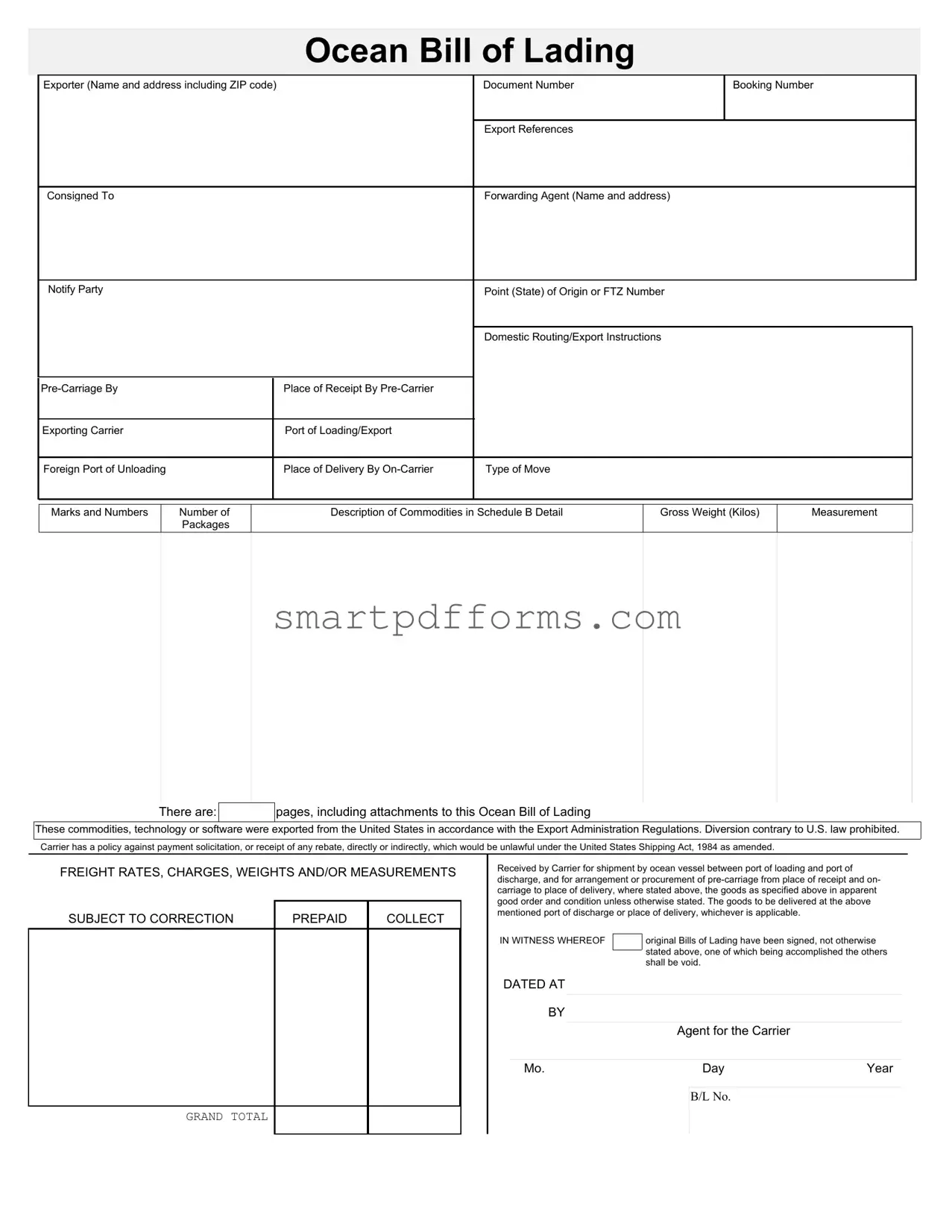The Sample Ocean Bill of Lading form plays a pivotal role in the world of international trade, serving as a critical document for the transportation of goods across the ocean. This form covers an extensive range of details, each with its own importance in the shipping process. It includes the exporter's information, including their name and address, document number, and booking number, which are essential for tracking and accountability. Export references along with the consigned to and forwarding agent's details are meticulously listed to ensure clarity on the parties involved. Additionally, the form specifies the notify party, point of origin, and domestic routing/export instructions, offering a clear path the goods will follow from the source to the destination. The logistics of the journey, such as pre-carriage, exporting carrier, and ports of loading and unloading, are laid out, alongside the final delivery details. The types of goods being shipped, their weight, measurement, and packaging details are explicitly noted, ensuring all parties are aware of the cargo's specifics. This document also adheres to legal compliance, stating the export is in accordance with the Export Administration Regulations and mentions the Carrier's stance on unlawful rebate policies. Rates, charges, and conditions for freight are also part of the document, delineating financial obligations. The Ocean Bill of Lading is finalized with an acknowledgment of receipt by the Carrier, underlining its authenticity and binding nature, evidenced by the required signatures. Overall, this form is indispensable for the organized, lawful, and efficient shipment of goods across international waters.

